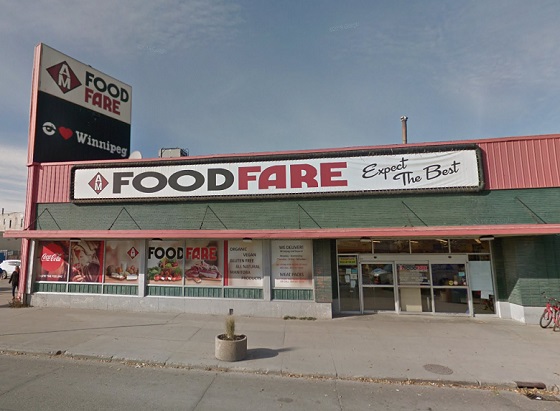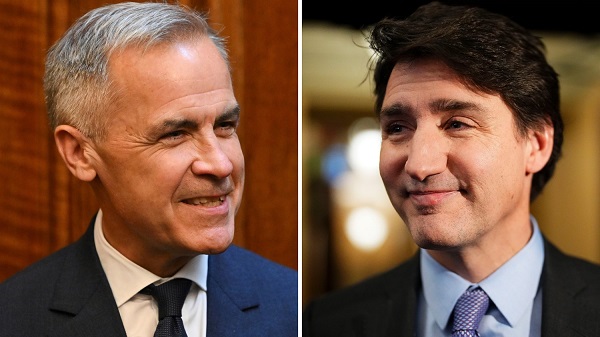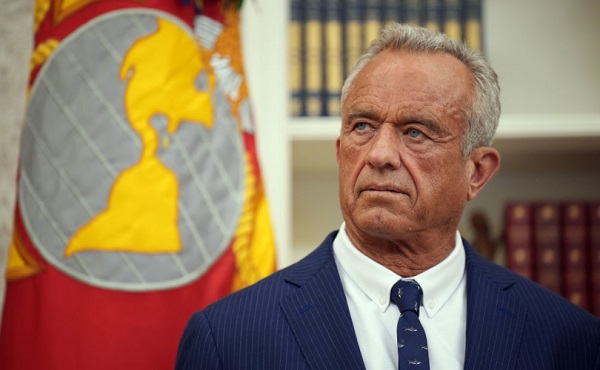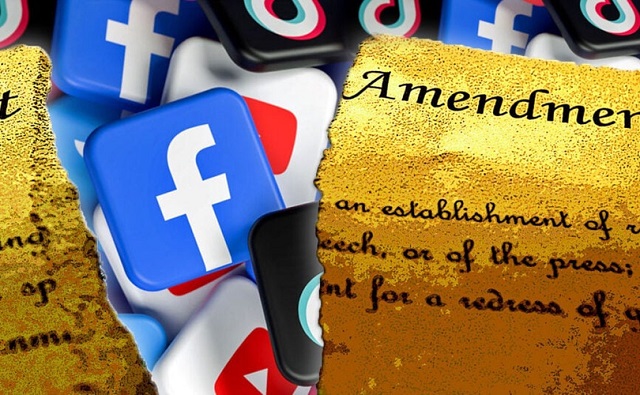Uncategorized
Inner city shoplifting and Manitoba Premier Wab Kinew

From the Frontier Centre for Public Policy
This problem is only made worse by gullible writers and politicians who make excuses for the thieves. Their excuse is that these people are disadvantaged, so they are less than fully responsible for their criminal conduct. Some sympathetic souls go even further, and suggest that these indigenous shoplifters are simply taking back what is rightfully theirs as “reparations” because the shop owners are on “stolen land”.
Winnipeg, Manitoba is being hit with an epidemic of shoplifting that appears to be out of control. Thieves openly steal expensive items, such as frozen meat, from inner city food stores. Shelves are stripped bare in what are more accurately described as robberies than shoplifting. Victims describe brazen thefts by entitled thieves who become indignant when caught in the act. One store employee, who tried to stop a theft, was told “You are on Treaty 1 territory”. The stores that are hardest hit are often owned by immigrant families who have worked very hard to build their modest businesses. Some have had to close, as a result of the unchecked criminality, and others will follow.
Police protection is weak. Even in rare cases where culprits are caught and prosecuted, sentences are minimal.
The problem of brazen theft from Winnipeg liquor stores reached such a serious level in the recent past that customers at urban liquor stores in Manitoba are now allowed to enter the store only after lining up single file, and producing identification. Liquor prices have risen as a result, because special government employees must be hired to sit at the door to inspect ID’s. Customers must line up outside, even on the coldest winter days, because freeloaders choose to steal liquor. And everyone – including the police – are too shy to confront the robbers.
Other western cities, such as Regina, Saskatoon and Thunder Bay are having similar problems. Even small cities, such as Wetaskiwin, Alberta, are hard hit.
The common element is that all of these cities and towns have significant indigenous populations who migrated to the cities from largely dysfunctional reserves, where attitudes of dependency, entitlement and victimhood prevail. Most arrive poorly educated, with few job skills, but with an expectation that they will be provided for. They proceed to live rough lives on the mean streets of these cities. Many drift to shoplifting and other crime. The inner city thieves are disproportionately from this demographic.
This problem is only made worse by gullible writers and politicians who make excuses for the thieves. Their excuse is that these people are disadvantaged, so they are less than fully responsible for their criminal conduct. Some sympathetic souls go even further, and suggest that these indigenous shoplifters are simply taking back what is rightfully theirs as “reparations” because the shop owners are on “stolen land”. They argue that these indigenous people are victims of a system that gives them no chance to succeed, or that they are suffering from the “intergenerational trauma” presumably caused by the fact that 1 in 6 indigenous children attended residential schools in the past.
The shoplifters readily adopt these excuses, and claim to be victims of “systemic racism”.
But, wait a minute! Isn’t the Premier of Manitoba, Wab Kinew, indigenous? Isn’t he a successful, law-abiding person? And wouldn’t most indigenous Canadians laugh at the idea that they had to steal to survive? How is it that Wab Kinew, and the many other successful indigenous Canadians manage their lives just fine while the shoplifters cannot?
The answer is that Wab succeeded the way all successful people do. He went to school, worked hard, and went where the jobs are. He was fortunate to have competent, caring parents who understood the importance of education and hard work. His parents also understood that assimilation (or, if you prefer, integration) was essential for their son to succeed. Wab’s father had a rough time in residential school, but used what he learned to raise a son who has become a provincial premier.
The fact that Kinew is fully assimilated does not prevent him from celebrating his indigenous heritage. Recently, a video of him energetically performing a prairie chicken dance went viral. It showed indigenous youth that they too can be both successful Canadians – and proudly indigenous – at the same time.
It is clear from watching him dancing so vigorously that he would have been a formidable warrior in pre-contact indigenous hunting culture. Colonialism ended that possibility. But it is equally clear that he, and the other indigenous people who were willing to learn the new ways, received a lot in return from the settlers. He is now an articulate, literate, thoroughly modern man, thanks to “settler colonialism”. Colonialism has also given him an expected lifespan more than double that of yesterday’s hunter-gatherers. Colonialism gave at least as much as it took from him.
Kinew’s memoir, “The Reason You Walk” describes someone determined to live his life not as a victim, but as a confident indigenous Canadian.
He built his own life – making mistakes along the way – but learning from those mistakes, and is now the leader of a province – and lauded as a possible future prime minister. He offers no apologies to critics who suggest that an indigenous person who is successful is somehow “selling out” indigenous people. His famous reply to that old saw is “Aboriginal success is the best form of reconciliation”.
Don’t expect to find Wab Kinew stealing frozen hamburger from a Food Fare store anytime soon.
But here’s the lesson indigenous youth can learn from the example Wab Kinew, and other successful indigenous people have set: “If they can do it, so can you”. They should also tell the apologists who want to give them tired excuses – excusing theft as “reparations” for perceived past wrongs, or “intergenerational trauma” – that they, like Wab, refuse to live their lives as “victims”.
In short, the solution to the shoplifting problem is not to condone theft. It is not to treat criminals differently because they are indigenous. It is not to offer them excuses. The solution is to create more Wab Kinews.
And that’s up to Indigenous parents. No government can do that for them. For many families, like Wab’s, that will include the difficult decision to move from dead-end reserves. But if they have the same commitment to their children’s education and upbringing that Wab’s parents had there is no reason that they can’t raise successful children in this country.
Long before he became Manitoba’s premier, Wab Kinew, regularly entertained listeners on CBC Radio. He was a refreshing, common sense voice, and always refused to play the victim. He never failed to remind young indigenous people that Canada worked just fine for him.
And, with a bit of grit and hard work, it can work for them too.
Brian Giesbrecht, retired judge, is a Senior Fellow at the Frontier Centre for Public Policy.
Uncategorized
Trump Admin Establishing Council To Make Buildings Beautiful Again


From the Daily Caller News Foundation
By Jason Hopkins
The Trump administration is creating a first-of-its-kind task force aimed at ushering in a new “Golden Age” of beautiful infrastructure across the U.S.
The Department of Transportation (DOT) will announce the establishment of the Beautifying Transportation Infrastructure Council (BTIC) on Thursday, the Daily Caller News Foundation exclusively learned. The BTIC seeks to advise Transportation Secretary Sean Duffy on design and policy ideas for key infrastructure projects, including highways, bridges and transit hubs.
“What happened to our country’s proud tradition of building great, big, beautiful things?” Duffy said in a statement shared with the DCNF. “It’s time the design for America’s latest infrastructure projects reflects our nation’s strength, pride, and promise.”
“We’re engaging the best and brightest minds in architectural design and engineering to make beautiful structures that move you and bring about a new Golden Age of Transportation,” Duffy continued.
Mini scoop – here is the DOT’s rollout of its Beautifying Transportation Infrastructure Council, which will be tasked with making our buildings beautiful again. pic.twitter.com/
9iV2xSxdJM — Jason Hopkins (@jasonhopkinsdc) October 23, 2025
The DOT is encouraging nominations of the country’s best architects, urban planners, artists and others to serve on the council, according to the department. While ensuring that efficiency and safety remain a top priority, the BTIC will provide guidance on projects that “enhance” public areas and develop aesthetic performance metrics.
The new council aligns with an executive order signed by President Donald Trump in August 2025 regarding infrastructure. The “Making Federal Architecture Beautiful Again” order calls for federal public buildings in the country to “respect regional architectural heritage” and aims to prevent federal construction projects from using modernist and brutalist architecture styles, instead returning to a classical style.
“The Founders, in line with great societies before them, attached great importance to Federal civic architecture,” Trump’s order stated. “They wanted America’s public buildings to inspire the American people and encourage civic virtue.”
“President George Washington and Secretary of State Thomas Jefferson consciously modeled the most important buildings in Washington, D.C., on the classical architecture of ancient Athens and Rome,” the order continued. “Because of their proven ability to meet these requirements, classical and traditional architecture are preferred modes of architectural design.”
The DOT invested millions in major infrastructure projects since Trump’s return to the White House. Duffy announced in August a $43 million transformation initiative of the New York Penn Station in New York City and in September unveiledmajor progress in the rehabilitation and modernization of Washington Union Station in Washington, D.C.
The BTIC will comprise up to 11 members who will serve two-year terms, with the chance to be reappointed, according to the DOT. The task force will meet biannually. The deadline for nominations will end Nov. 21.
Uncategorized
New report warns WHO health rules erode Canada’s democracy and Charter rights

The Justice Centre for Constitutional Freedoms has released a new report titled Canada’s Surrender of Sovereignty: New WHO health regulations undermine Canadian democracy and Charter freedoms. Authored by Nigel Hannaford, a veteran journalist and researcher, the report warns that Canada’s acceptance of the World Health Organization’s (WHO) revised International Health Regulations (IHR) represents a serious erosion of national independence and democratic accountability.
The IHR amendments, which took effect on September 19, 2025, authorize the WHO Director-General to declare global “health emergencies” that could require Canada to follow directives from bureaucrats in Geneva, bypassing the House of Commons and the will of Canadian voters.
The WHO regards these regulations as “binding,” despite having no ability or legal authority to impose such regulations. Even so, Canada is opting to accept the regulations as binding.
By accepting the WHO’s revised IHR, the report explains, Canada has relinquished its own control over future health crises and instead has agreed to let the WHO determine when a “pandemic emergency” exists and what Canada must do to respond to it, after which Canada must report back to the WHO.
In fact, under these International Health Regulations, the WHO could demand countries like Canada impose stringent freedom-violating health policies, such as lockdowns, vaccine mandates, or travel restrictions without debate, evidence review, or public accountability, the report explains.
Once the WHO declares a “Pandemic Emergency,” member states are obligated to implement such emergency measures “without delay” for a minimum of three months.
Importantly, following these WHO directives would undermine government accountability as politicians may hide behind international “commitments” to justify their actions as “simply following international rules,” the report warns.
Canada should instead withdraw from the revised IHR, following the example of countries like Germany, Austria, Italy, Czech Republic, and the United States. The report recommends continued international cooperation without surrendering control over domestic health policies.
Constitutional lawyer Allison Pejovic said, “[b]y treating WHO edicts as binding, the federal government has effectively placed Canadian sovereignty on loan to an unelected international body.”
“Such directives, if enforced, would likely violate Canadians’ Charter rights and freedoms,” she added.
Mr. Hannaford agreed, saying, “Canada’s health policies must be made in Canada. No free and democratic nation should outsource its emergency powers to unelected bureaucrats in Geneva.”
The Justice Centre urges Canadians to contact their Members of Parliament and demand they support withdrawing from the revised IHR to restore Canadian sovereignty and reject blind compliance with WHO directives.
-

 Business1 day ago
Business1 day agoBill Gates Gets Mugged By Reality
-

 armed forces1 day ago
armed forces1 day agoIt’s time for Canada to remember, the heroes of Kapyong
-

 Censorship Industrial Complex1 day ago
Censorship Industrial Complex1 day agoSchool Cannot Force Students To Use Preferred Pronouns, US Federal Court Rules
-

 Alberta1 day ago
Alberta1 day agoAlberta Announces Members of Class Size and Complexity Committee
-

 Alberta1 day ago
Alberta1 day agoTell the Province what you think about 120 km/h speed limit on divided highways
-

 armed forces1 day ago
armed forces1 day agoThe Liberal Government Just Betrayed Veterans. Again. Right Before Remembrance Day.
-

 Business2 days ago
Business2 days agoCarney’s Deficit Numbers Deserve Scrutiny After Trudeau’s Forecasting Failures
-

 Health1 day ago
Health1 day agoRFK Jr. urges global health authorities to remove mercury from all vaccines










